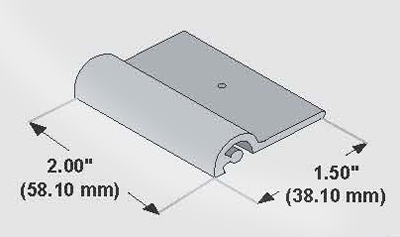

- #Simple lap splice or a wrap splice with potting. code
- #Simple lap splice or a wrap splice with potting. plus
Based on testing, judgment, or both, it seems that ACI has decided that 6" is the appropriate limit.I think that it's perfectly acceptable to "splice" bars that are offset more than 6" so long as you provide the ties required to justify the strut & tie model.

#Simple lap splice or a wrap splice with potting. code
I believe that a code defined "lap splice" is simply a version of this strut & tie model where we have deemed that the offset between bars is small enough that it is not necessary to provide the "ties" in the strut and tie system. Since we're dealing with two tension forces connected by a concrete strut of some sort, I believe that strut & tie methodology is a reasonable way to approach this problem. This is true even when the bars are in direct contact with one another since there is no inherent shear connection between the bars. Here's my opinion:ġ) The situation that you've described does not constitute an ACI lap splice.Ģ) With the appropriate detailing, you can do what you've proposed in your sketch.Īny time that you are transferring stress from one rebar segment to another via a "lap", there is concrete compression involved. The more basic question about this, however, is does this constitute a lap splice per ACI? RE: What EXACTLY is a lap splice? Lion06 (Structural)
#Simple lap splice or a wrap splice with potting. plus
Point is well taken about overlapping the bars by ld of the #11 plus the #18. If, however, there are #18 bars developed above and below that plane then all was good in my mind. The remaining length of bar would just pull out of the parent member because the remaining embedded length is just so small. a tension failure would look something like a tensile failure of the concrete section but above the bottom of the #11 bars. First, if you have this column that is anchored at the bottom and the # 11 bars stop short of the bottom by 20'. I had a two step thought process in my head. Is there a reason you picked halfway? I was thinking (even though I didn't draw it that way), and said in an earlier post, that the #18 should be developed above the line defined as follows: the line that marks where the tensile capacity of the concrete is exceeded as the tensile force sheds from the steel to the concrete.


 0 kommentar(er)
0 kommentar(er)
